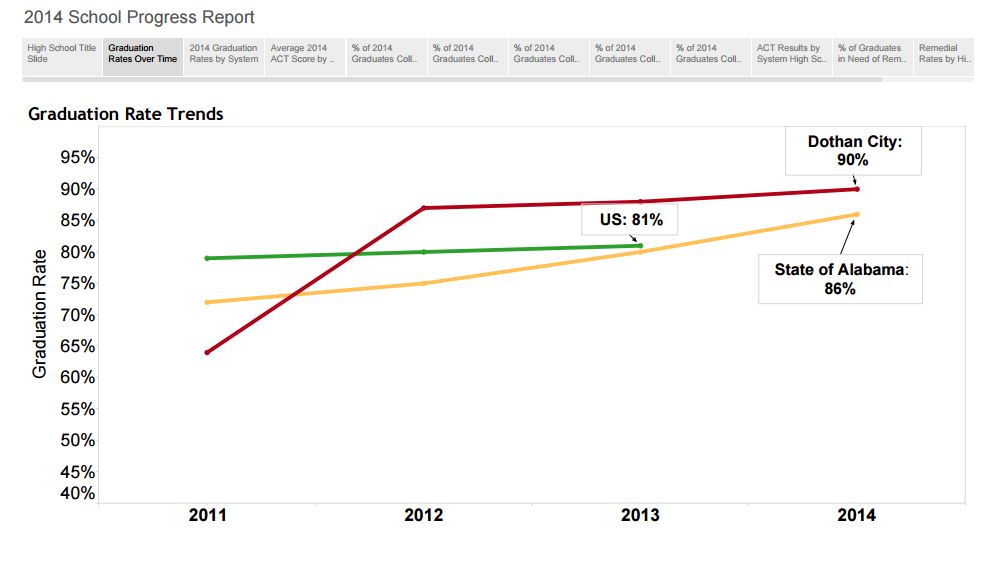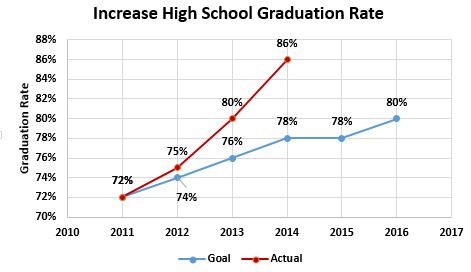Raising Alabama’s high school graduation rate to 90 percent would produce an economic impact to the state’s economy similar to landing an industrial mega-project, and that impact would be repeated each year the 90 percent rate is maintained, according to a new report released Saturday by the Business Education Alliance.

The report, authored by the Public Affairs Research Council with economic modeling performed by Auburn University at Montgomery Economics Professor Keivan Deravi, was commissioned by the BEA to quantify the potential benefits of the state’s education improvement plan, Plan 2020.
Presented Aug. 2 to the governor, legislators and business leaders assembled at the Business Council of Alabama’s annual governmental affairs conference at the Grand Hotel in Point Clear, the report models the impact of raising the graduation rate from the current 80 percent rate to Plan 2020’s goal of reaching 90 percent by 2020. (Presentation Slideshow, available here).
“Economic models prepared for this report predict that if we reach the goal by 2020, the state’s economic output will be $430 million greater that year than if our graduation rate were to remain at its current level,” the report finds. “Each year we sustain the 90 percent graduation rate, each class of graduates would be 5,643 larger, with 3,564 of them going into the workforce, resulting in a net addition of 1,167 more people employed. Each class graduating at 90 percent would collectively earn $68 million more than a class graduating at the 80 percent rate.”
On top of the direct impact from the new graduates, the increased employment and earnings would produce a multiplier effect, further stimulating the state’s economy.
Deravi describes the potential impact as a “permanent upward structural shock to the State’s economic resources.”
“As such, it will, continuously and exponentially, add to economic prosperity of the State’s economy,” Deravi said.
 If Plan 2020 succeeds in its aim of producing graduates who are better prepared for college and careers, the impact will be even greater. Those more highly-qualified graduates would be more likely to finish college, further raising the educational credentials of Alabama’s 21st Century workforce.
If Plan 2020 succeeds in its aim of producing graduates who are better prepared for college and careers, the impact will be even greater. Those more highly-qualified graduates would be more likely to finish college, further raising the educational credentials of Alabama’s 21st Century workforce.
PARCA Executive Director Jim Williams describes Plan 2020 as a strategic opportunity akin to the one Alabama seized when it landed Mercedes.
“It’s a far more ambitious improvement plan than anything I have seen in my 26 years at PARCA,” Williams said.
While the marquee goal of Plan 2020 has been widely discussed, what is less well understood is that the Plan is much more than an announcement an ambitious goal.
Plan 2020 contains a host of specific strategies for improving Alabama’s educational offerings from the earliest years of a child’s life, straight through to focused planning for college and career.
It’s important for the state’s political, business, civic, and educational leadership to understand the comprehensive and interdependent mechanics of the plan. For Plan 2020’s goals to be realized, it will need a unified commitment to see it through to full implementation.
The report attempts to describe the breadth of the activity encompassed by Plan 2020. The Plan calls on the schools:
1. Start Early: by expanding Alabama’s First Class Pre-K program so that students enter school with a strong foundation.
2. Set High Expectations: by adopting new nationally-competitive educational standards which call on Alabama students to learn at the level expected of students in other states. Plan 2020 includes a more rigorous system of assessments that should provide a clearer picture of whether students are truly reaching the level of preparation needed for college and career readiness. The higher standards and more rigorous assessments are backed up by a new accountability system which will provide a better picture of which schools are getting the job done and which need to improve.
3. Break down barriers to learning: schools across the state are adopting a concerted approach for identifying and addressing factors that often lead to school failure. These include economic and educational disparities, attendance, academic and discipline problems.
4. Seek continuous improvement in teaching and leading: educators are being called on to teach students to a higher level and thus need support and resources to continuously improve their abilities to deliver in the classroom. The Plan calls for higher standards for teacher preparation programs, new productively-structured evaluations for educators, and mechanisms for recruiting the best and the brightest into the teaching field.
5. Equip Every Student with a Plan for Success and a Pathway to Prosperity: Plan 2020 seeks to better connect classroom learning to its applicability in the wider world. It includes initiatives to get students thinking earlier and more clearly about their future plans and mechanisms for engaging business with the education so that what’s taught in school prepares students for the demands of the modern workplace.







 Summer Adventures in Learning, the Birmingham-centered collaborative of summer learning programs, has expanded to 30 sites this summer offering academically-enriched summer recreational camps, primarily to low-income children.
Summer Adventures in Learning, the Birmingham-centered collaborative of summer learning programs, has expanded to 30 sites this summer offering academically-enriched summer recreational camps, primarily to low-income children.
